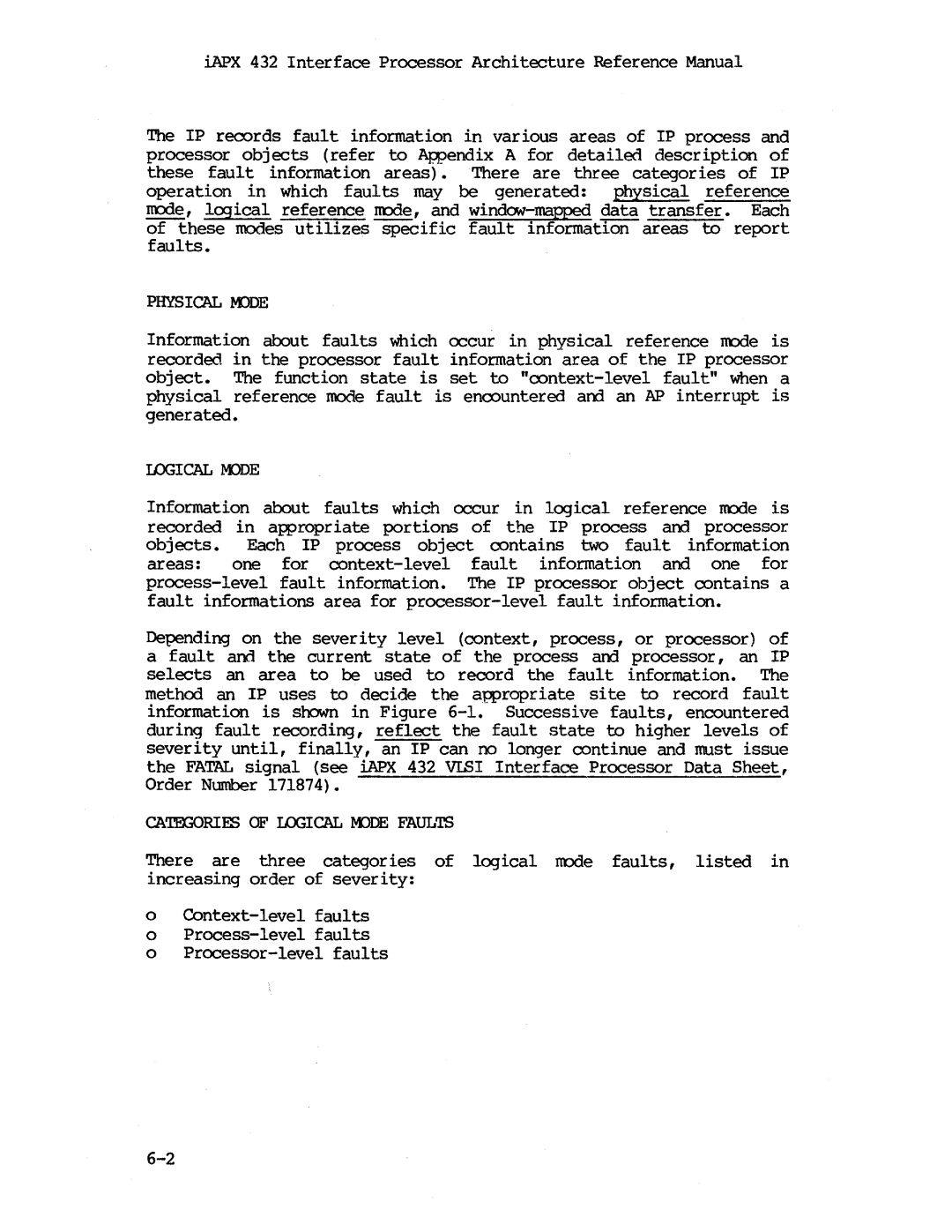
iAPx 432 Interface Processor Architecture Reference Manual
The IP records fault information in various areas of IP process and processor objects (refer to Appendix A for detailed description of these fault information areas). There are three categories of IP operation in which faults may be generated: physical reference node, logical reference node, and
PHYSICAL mOE
Information about faults which occur in physical reference node is recorded in the processor fault infoDmatian area of the IP processor obj ect. The function state is set to
LOOICAL moE
Information about faults which occur in logical reference node is recorded in awropr iate portions of the IP process and processor
objects. Each IP process object contains two fault information
areas: one for
Depending on the severity level (context, process, or processor) of a fault and the current state of the process and processor, an IP selects an area to be used to record the fault information. The method an IP uses to decide the appropriate site to record fault information is shown in Figure
CATEX;()RIES OF LOOICAL mOE FAULTS
There are three categories of logical node faults, listed in increasing order of severity:
o
o
o
